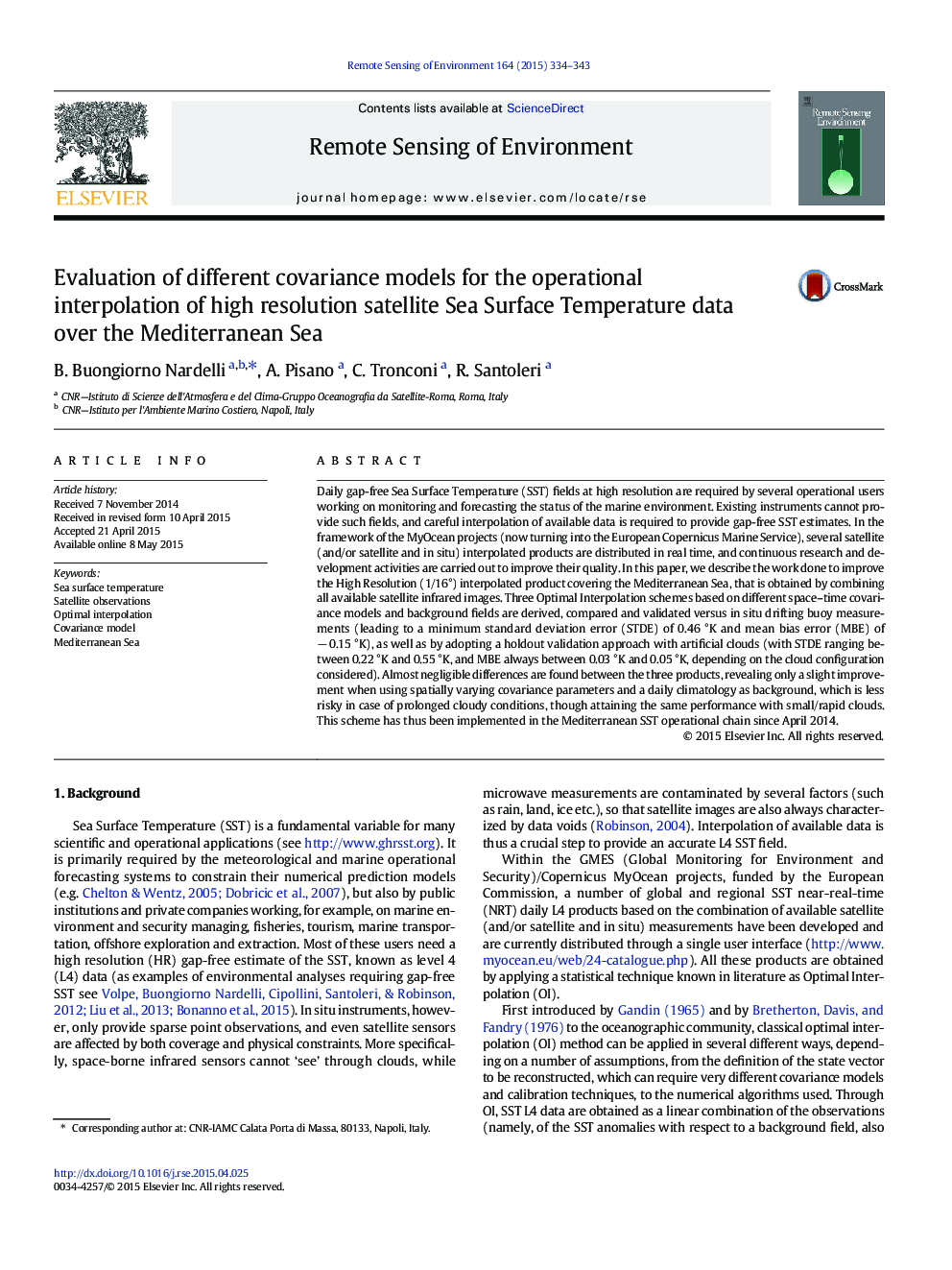| کد مقاله | کد نشریه | سال انتشار | مقاله انگلیسی | نسخه تمام متن |
|---|---|---|---|---|
| 6346056 | 1621236 | 2015 | 10 صفحه PDF | دانلود رایگان |
- Different models for the optimal interpolation of Mediterranean SST are tested.
- Interpolated SST validation based on matchup with drifter data and simulated clouds
- Model based on previous day background less accurate with persistent clouds
Daily gap-free Sea Surface Temperature (SST) fields at high resolution are required by several operational users working on monitoring and forecasting the status of the marine environment. Existing instruments cannot provide such fields, and careful interpolation of available data is required to provide gap-free SST estimates. In the framework of the MyOcean projects (now turning into the European Copernicus Marine Service), several satellite (and/or satellite and in situ) interpolated products are distributed in real time, and continuous research and development activities are carried out to improve their quality. In this paper, we describe the work done to improve the High Resolution (1/16°) interpolated product covering the Mediterranean Sea, that is obtained by combining all available satellite infrared images. Three Optimal Interpolation schemes based on different space-time covariance models and background fields are derived, compared and validated versus in situ drifting buoy measurements (leading to a minimum standard deviation error (STDE) of 0.46 °K and mean bias error (MBE) of â 0.15 °K), as well as by adopting a holdout validation approach with artificial clouds (with STDE ranging between 0.22 °K and 0.55 °K, and MBE always between 0.03 °K and 0.05 °K, depending on the cloud configuration considered). Almost negligible differences are found between the three products, revealing only a slight improvement when using spatially varying covariance parameters and a daily climatology as background, which is less risky in case of prolonged cloudy conditions, though attaining the same performance with small/rapid clouds. This scheme has thus been implemented in the Mediterranean SST operational chain since April 2014.
Journal: Remote Sensing of Environment - Volume 164, July 2015, Pages 334-343
